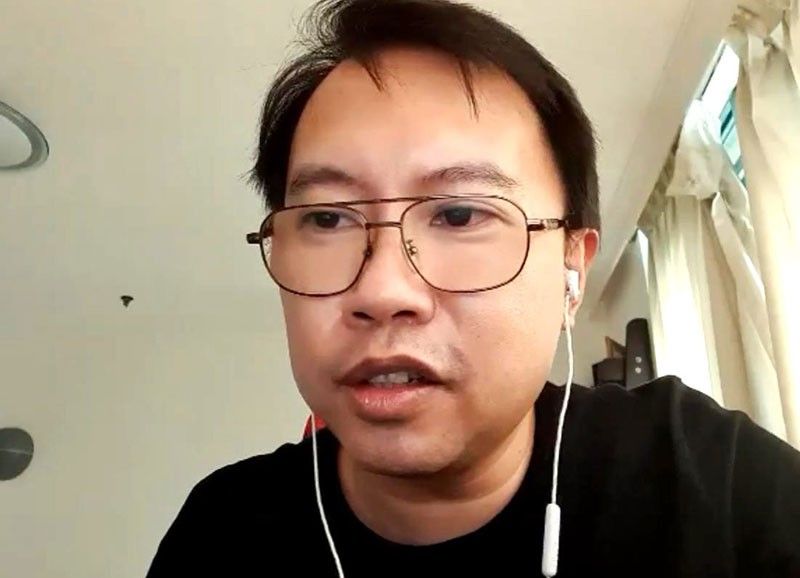Industry stakeholders on how to protect movie workers

MANILA, Philippines — Filmmaking is a collaborative work. Although a director is in charge of the mise en scene, while producers assure the viability of the narrative, it involves creative minds and their number is a lot. With the COVID-19 pandemic, making movies is put on hold. If production is allowed, safety measures for movie workers should be in place.
The Philippine Motion Pictures Producers Association (PMPPA) said in a recent media briefing via Zoom that it follows the Inter-Guild Alliance (IGA) guidelines. IGA, based on the information given by PMPPA, “is a community-based network of various groups representing different sectors of the film, television and advertising industries in the Philippines.”
“They have reasons, of course, for releasing those guidelines,” said panelist and PMPPA member Perci Intalan of the interim guidelines released by the Film Development Council of the Philippines (FDCP) and the PMPPA’s choice of IGA’s. “The reason why we felt that we needed to make it clear that what we will follow are the IGA guidelines; it’s not because we feel na… mali or anything yung sa FDCP, it is just that it is not complete yet from our point of view. And we also know that all these people (from IGA) are working hard to put together their guidelines.”

Another panelist Joey Reyes, also PMPPA spokesperson, explored it by saying that the IGA guidelines speak of the workers’ context and are specific to their working conditions.
“If you examine the FDCP guidelines, there’s nothing wrong with that,” he said. “Ang maganda sa ginawa ng Inter-Guild (Alliance) is very specific, na ginawa nung mga gagawa.”
Following Joey’s thoughts, one may put it that the guidelines reflect the views of movie people like production designers, editors and cinematographers. “It’s more specific so it’s easier, and definitely more practical and more logical to follow what has been written by the people who are on the ground,” he added, “and made the guidelines for them to work... There would be no better person to talk about the needs of his working conditions than the worker himself.... we choose to be specific because we have to protect them, we have to protect each and everyone of them.”
Paolo Villaluna of IGA also joined the discourse by sharing that “na science-based din yung protocols na ginawa namin, apart from very specific ito na each worker nag-contribute, we also wanted to double check all the science behind the protocols... we had advisors from Philippine General Hospital, the science department (of a college) at UP and we double checked lang all other information para lang na nakaka-sigurado tayo.” Also present in the group interview were other panelists PMPPA president Orly Ilacad and members Roselle Monteverde and lawyer Josabeth “Joji” Alonzo.
IGA was represented by Patti Lapus of Alliance of Producers, Line Producers and Production Managers; Paolo, Directors’ Guild of the Philippines, Inc.; Jedd Dumaguina, Sound Speed Philippines; Mackie Galvez, Lupon ng Pilipinong Sinematograpo; Jules Katanyag, TV and Film Screenwriters Collective; Maria Paulina Marasigan, Assembly of Assistant Directors and Script Supervisors, Kapisanan ng mga Assistant Directors ng Patalastas; Benjamin Padero, Production Design Technical Working Group; and Benjamin Tolentino, Filipino Film Editors.
They also shared the following ideas in what one may consider the new normal scenario in filmmaking: Limited physical contact (like maximum number of 70 essential people on the set at any given time); workers may take vans (with limited number), their own cars and public transportation available to them; a working day of 12 hours or less in all phases of production; single-serve meals or bring-your-own-food-and-drinks over buffet style; one entry point in the location for sanitation; the presence of a medic for checking body temperature and symptoms and a protocol supervisor for the implementation of guidelines; disinfection of props like wardrobe (and one basket of wardrobe for actors) and sets, measures for make-up and food styling; one-is-to-one use of lapel mic; remote, work from home post-prod; and online payments.
What one could glean upon from the conversation is that producers are aware that the livelihood of these workers depends on the film industry, but they need to strike a balance, “by making sure that we have a safe set, (by) making sure that we have a safe production, and at the same, (we) try to give as much work as we can to people who need work. Maybe part of the solution is walang lagare because it forces you to hire specific people for specific productions,” said Intalan.
With the guidelines, movie workers and producers can make films in a safe environment.
- Latest
- Trending






























